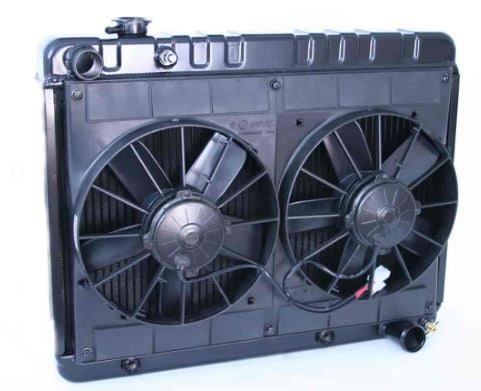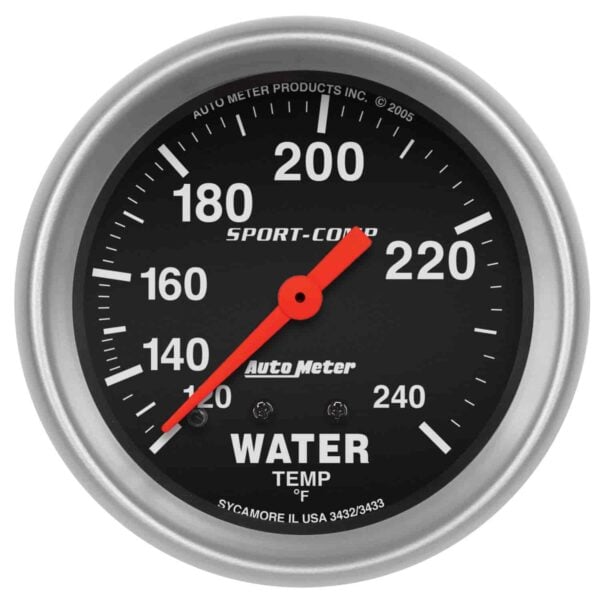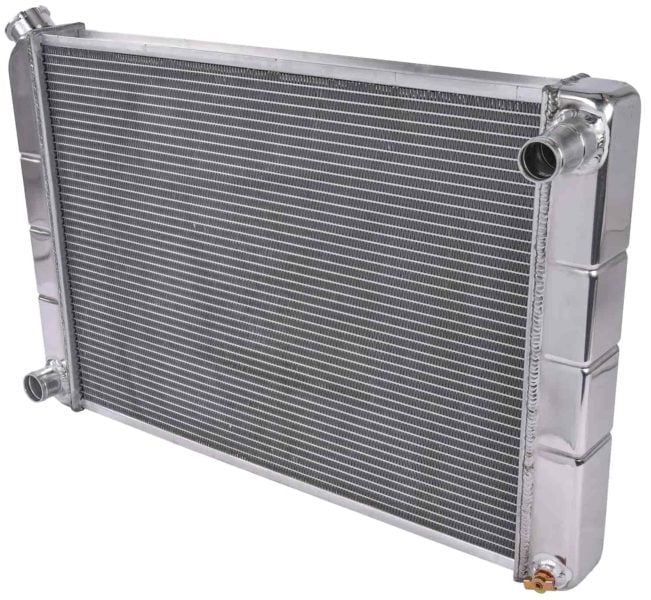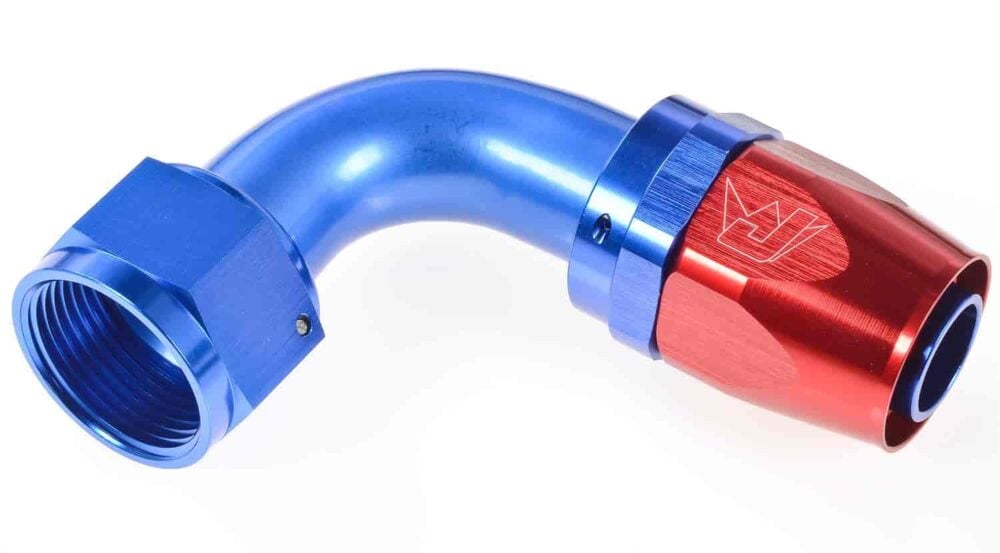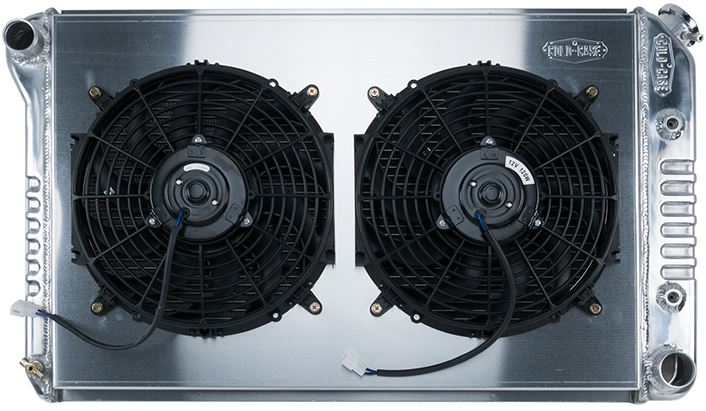
Every modern car has a radiator at the front of the engine compartment to help manage motor temperatures. For most unmodified vehicles the stock radiator is more than capable of handling the heat generated during combustion. Auto enthusiasts that want to push their vehicle to produce more power, or to tackle extreme towing or off-roading tasks may struggle with their engine temperatures. For these specialty use cases, a performance radiator can be an excellent investment. Performance radiators use specialized designs to offer a greater cooling capacity compared to stock radiators. Read on to understand this upgrade to determine if it's right for your needs.
What Is a Performance Radiator?
A performance radiator upgrade is an enhanced cooling component that more effectively removes heat from the engine of your car. By removing more heat, an enhanced radiator helps a more powerful engine manage its temperatures safely and effectively to prevent damage during intense driving situations.
Most high-performance radiators and systems are made from high-strength aluminum and built with thinner coolant tubes, multiple radiator cores, more powerful fans, or optimized with multi-pass designs.
How a Performance Radiator Works
Performance radiators work on the same principles that basic radiators do; they just improve upon one of the design elements of the system to allow it to remove more heat from the engine. Performance radiators remove heat from the coolant responsible for cooling your vehicle's engine. They do this by creating a space for cooler ambient air to travel over specialized heat-exchanger fins as your engine runs. The fins interact with coolant tubes that run throughout the radiator to remove heat from the coolant as it passes from the inlet of the radiator to the outlet.
Most performance radiator brands create products with a greater density of cooling fins, thinner fin material, or wider tubes to allow more heat to be removed during use. Thinner and more densely-packed fins increase the cooling surface area of a radiator. Thicker coolant tubes allow coolant to flow at a higher rate to increase heat removal.
A performance radiator will almost always be made from aluminum, and that's to make it lighter and to allow the material to be thinner so heat can be transferred more readily. A high-performance radiator will also likely come with more powerful electric fans to pull more air over the fins and lower the temperature of the coolant to a greater extent.
Aluminum can be made thinner than other radiator materials like copper and brass, allowing the tubes and fins to be more effective at transferring heat. Larger performance radiators are sectioned to allow the coolant to pass over the cores multiple times, and some of these radiators have larger fans to pull a greater volume of air over the radiator fins for increased cooling while sitting still.
Most performance radiators include some of the upgrades mentioned above but you can determine strength and quality by considering whether it’s multi-pass or single pass, how many cores are present, how powerful the fans are and how wide the coolant tubes are. Use this information to determine which performance upgrade is best for your needs.
Power Benefits of Performance Radiators
So many people ask, "does a new radiator improve performance?" The question is more complicated than it seems at first glance. On its own, a radiator upgrade won't increase the amount of power your vehicle generates. Radiators are only responsible for reducing your engine's temperature to reasonable levels, and just cooling an engine won't make it output any additional power. A high-performance radiator can be a useful upgrade to an engine that you enhance in other ways, such as by adding a turbocharger or supercharger to generate more power. When combined with a performance upgrade to your engine, a more capable radiator helps your engine maintain safe running temperatures even when outputting more power and generating significantly more heat.
An upgraded radiator won't cause your engine to generate more power itself, but an enhanced radiator is essential if you're going to upgrade your engine to create more power.
Speed Benefits of Performance Radiators
The speed of your vehicle depends on your engine's ability to produce as much power as possible. A more powerful engine can improve acceleration, top speed, and the vehicle's ability to generate speed overall. This fact is why it's so beneficial to upgrade the radiator in your vehicle when upgrading the engine in your car. Whether you install a larger engine into your vehicle, or you use a supercharger or turbocharger, or you enhance the power of your engine differently, your vehicle will become faster as a result. The trick to maintaining the speed increase that your engine upgrades offer you is to manage the greater heat output that comes from those engine upgrades.
More powerful engines generate more heat, and if the heat is allowed to build up unchecked, it will damage the engine and hurt overall performance gains. Investing in a performance radiator gives your upgraded car the ability to maintain its speed improvements without suffering damage or temperature-related performance losses. This is the true value of a performance radiator, and it's the number one reason you should consider adding one to your vehicle if you want to make it faster.
Should You Make a Radiator Upgrade?
You should only consider upgrading to a performance radiator if you've modified your vehicle to enable it to produce more power or if you're going to use it in an unintended way that puts more strain on the engine. A stock radiator should provide adequate cooling for an unmodified engine for between eight and ten years before it fails from wear or corrosion. If you're using a vehicle without modifications and the radiator is in good condition, it makes sense to continue relying on it.
If you add a supercharger or a turbocharger to your vehicle, you may also consider investing in a more capable radiator. You might also want to consider replacing a failing stock radiator with an all-aluminum replacement for the added reliability that a superior aftermarket radiator can offer you.
A performance radiator can be a worthwhile investment if you want a more reliable cooling system or you want to upgrade the power of your vehicle in another way as well. It's important to consider whether or not a new radiator will give you enough benefits in your specific situation before you invest in the upgrade.
Want fast access to leading performance automotive parts for your vehicle? JEGS is the premier performance parts provider for auto enthusiasts. Access leading performance parts through the online or mail-order purchase catalog today.
